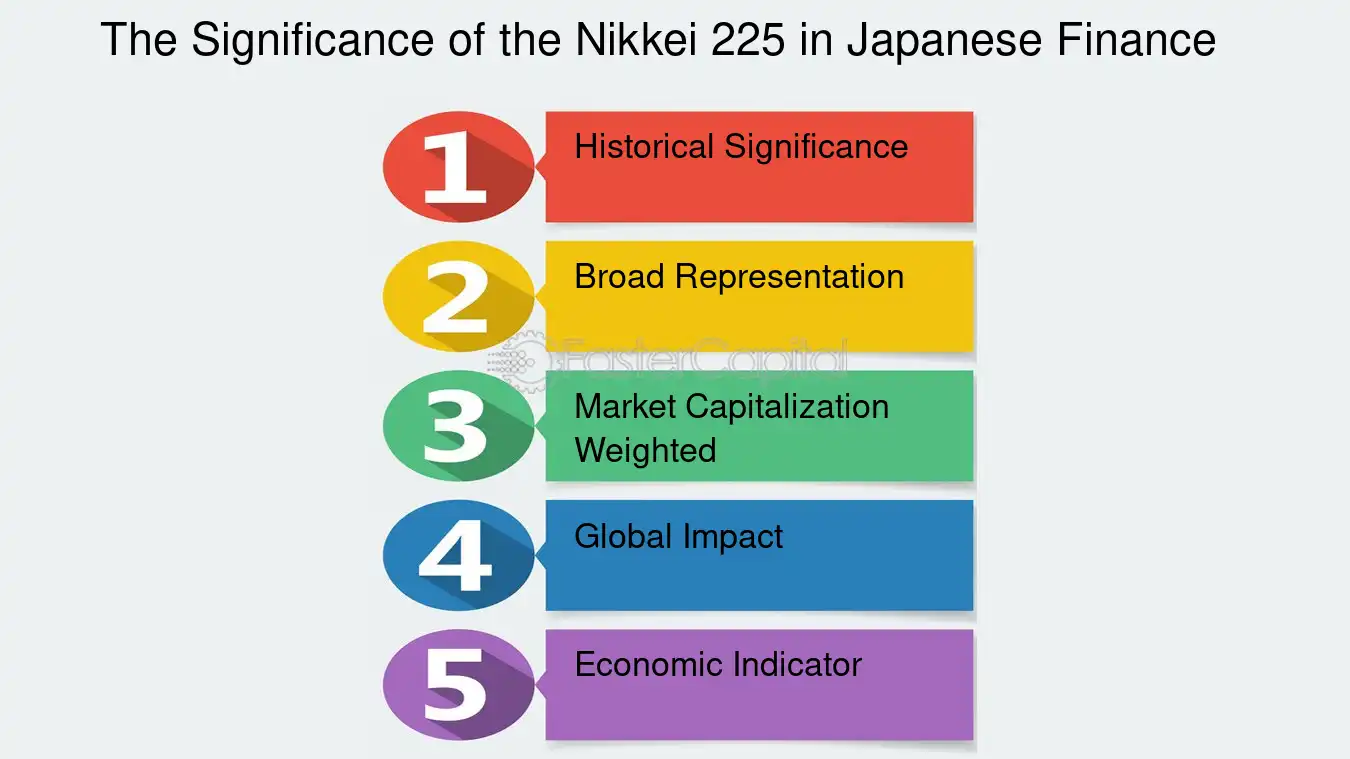What is the Nikkei 225?
The Nikkei 225, also known as the Nikkei Stock Average, is Japan’s leading stock market index. Established in 1950, it tracks the performance of 225 large-cap companies listed on the Tokyo Stock Exchange (TSE). The index serves as a barometer of Japan’s economic health and reflects trends in its corporate sector.
How the Nikkei 225 is Calculated
The Nikkei 225 uses a price-weighted calculation method. This means that companies with higher stock prices have a greater influence on the index’s movement, regardless of their market capitalization. Unlike other indices that use market-weighted methods, this approach gives unique insights into stock performance in Japan.
Key Components of the Nikkei 225
The index includes companies from various sectors, ensuring a diverse representation of the Japanese economy. Major contributors include:
- Technology Giants: Sony, Panasonic, and SoftBank.
- Automotive Leaders: Toyota and Honda.
- Consumer Goods: Fast Retailing (Uniqlo) and Shiseido.
This mix of industries highlights the innovative and export-driven nature of Japan’s economy.
Historical Significance of the Nikkei 225
The Nikkei 225 has witnessed significant milestones and challenges:
- 1980s Boom: The index reached an all-time high of 38,957 in December 1989 during Japan’s economic bubble.
- 1990s Decline: Following the burst of the bubble, the index experienced a prolonged downturn, reflecting economic stagnation.
- Recent Recovery: In recent years, the index has regained momentum due to policy reforms, technological advancements, and global trade dynamics.
Why the Nikkei 225 Matters
The Nikkei 225 is more than just a stock market index. It serves as:
- An Economic Indicator: The index reflects Japan’s economic performance and investor sentiment. Movements in the Nikkei often correlate with global market trends.
- A Benchmark for Investors: International and domestic investors use the Nikkei as a benchmark to evaluate the performance of their Japanese equity portfolios.
- A Reflection of Innovation: The index highlights the achievements of Japan’s leading companies in technology, manufacturing, and consumer goods.
Challenges Faced by the Nikkei 225
Despite its significance, the Nikkei 225 faces challenges, including:
- Global Market Volatility: Economic uncertainties and geopolitical tensions impact the index’s stability.
- Aging Population: Japan’s demographic challenges affect domestic consumption and long-term growth.
- Currency Fluctuations: The strength of the yen against other currencies influences the competitiveness of Japanese exports.
The Future of the Nikkei 225
The Nikkei 225 is poised to remain a vital indicator of Japan’s economic landscape. Key factors influencing its future include:
- Technological Advancements: Innovations in robotics, AI, and green energy are likely to boost the performance of tech-focused companies in the index.
- Global Trade Relations: Japan’s active participation in trade agreements will play a crucial role in sustaining economic growth.
- Policy Reforms: Government initiatives aimed at revitalizing the economy will contribute to long-term stability.
Conclusion
The Nikkei 225 is a cornerstone of Japan’s financial markets and a reflection of its economic resilience. As the global economy evolves, the index will continue to adapt, representing the dynamic nature of Japanese industry and innovation.
